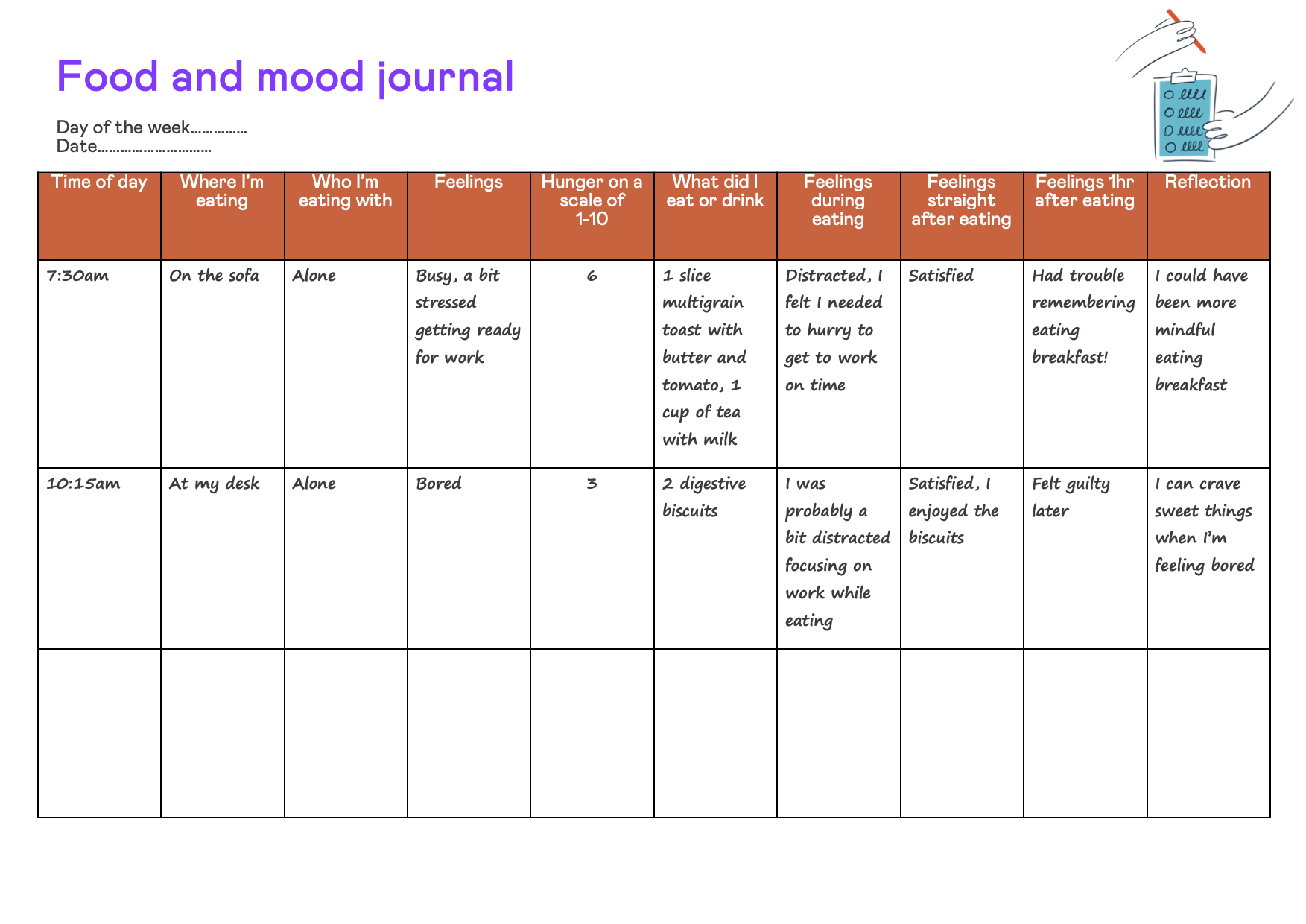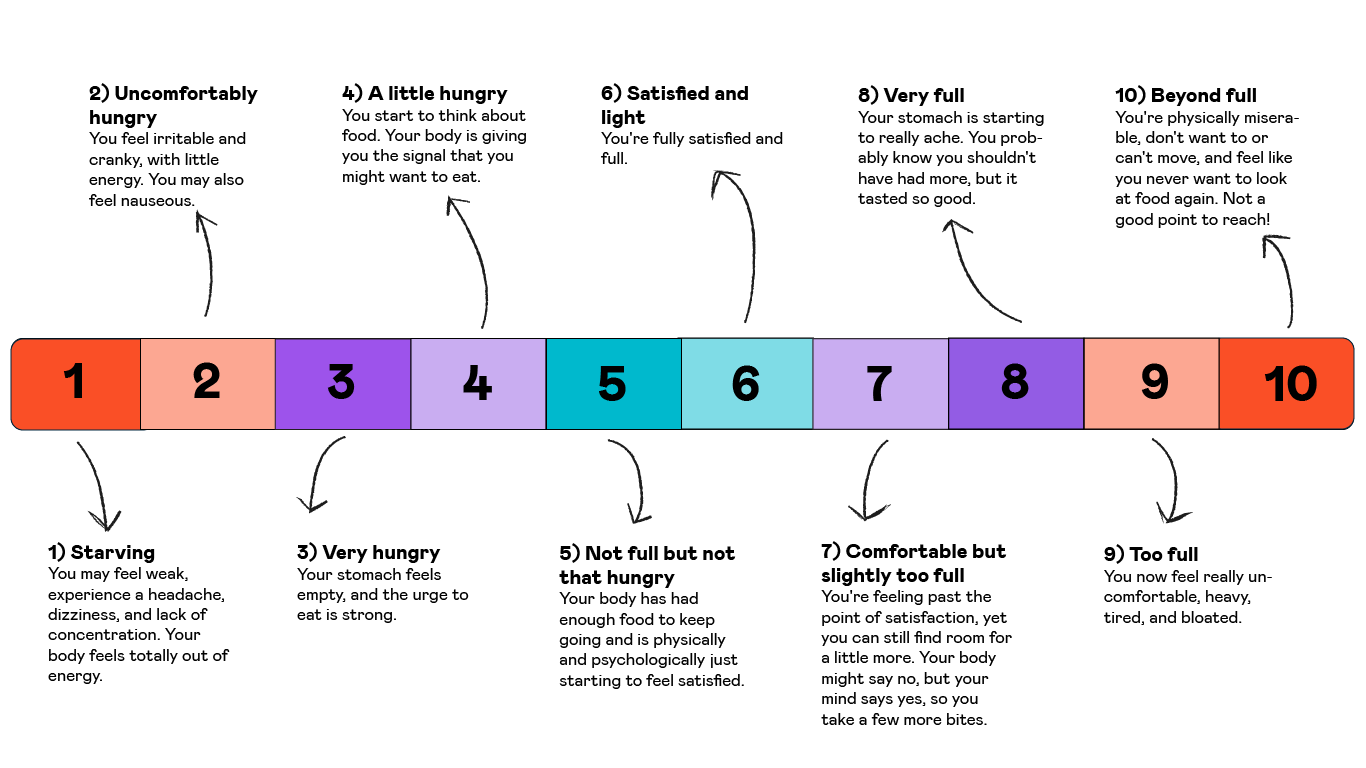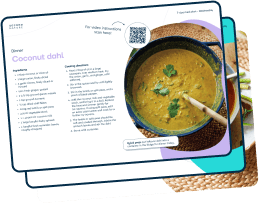Since the coronavirus outbreak, understandably our routines and lives have been turned upside down. Many of us will be experiencing higher levels of stress and anxiety compared to usual, which can lead to an increase in emotional eating.
Being aware of the reasons why we might be experiencing strong cravings with certain emotions is necessary to help us overcome emotional eating. The most important thing to understand if you’re an emotional eater is that it’s not down to a lack of willpower or certain weaknesses. In reality, emotional eating is an adaptive response from the brain and body and taking away any feelings of guilt associated with these behaviours is essential.
This guide will discuss strategies to help you identify emotional eating and the situations or emotions that might trigger this. Identifying why and when emotional eating might happen for you is the first step to overcoming and preventing this.
Keep in mind that there’s a difference between emotional eating and binge eating disorder (BED), which is a severe mental illness. Overeating every now and again is perfectly normal, however, if you’re experiencing binge-eating episodes at least once a week for three months, it’s important to seek help from a qualified healthcare professional.
Medication-assisted weight loss with a future focus
Start with Wegovy or Mounjaro, transition to habit-based health with our support


Know your triggers
The first step to identifying emotional eating is to learn what situations or events trigger negative feelings for you and may tempt you to turn to food for comfort.
Keeping a ‘food and mood journal‘ for a week can be a great way to help you identify patterns or triggers. Here’s an example of what this might look like:
 Firstly, record all the food and drinks that you have throughout the day, including the time you had them and the portion size. At the same time, record the following information in your journal:
Firstly, record all the food and drinks that you have throughout the day, including the time you had them and the portion size. At the same time, record the following information in your journal:
- How were you feeling before, during, and after eating or drinking each meal/snack?
- What number were you on the hunger scale before, during, and after eating? (more on what the hunger scale is below!)
- Where were you when you ate?
- Were there any events which led to how you were feeling before or during eating?
- Who were you with when you had that meal or snack?
- What were you doing while eating (e.g. watching TV, at work, with friends)
- How did you feel 1 – 2 hours after eating?
Although this may seem time-consuming at the start, doing this activity for a week will provide you with powerful data on the relationship between your feelings and eating habits.
Once you’ve collected this information, you can start to look for trends and patterns. For example, did you notice you ate snacks or comfort foods in the afternoon at work if you had a stressful meeting in the morning? Or perhaps you ate past the point of fullness when you were out at dinner with friends? Did you finish a packet of biscuits or tub of ice cream when you were doing a mindless task at work?
Knowing this information can be extremely useful in planning how to overcome emotional eating.
Key points:
- Having a better understanding of which situations might trigger emotional eating is important in preventing and overcoming this
- Keeping a food and mood journal can help us to pinpoint certain triggers that may lead to overeating and weight gain in the long term
Know the difference between physical and emotional hunger
Differentiating between emotional and physical hunger is also important to help us become more mindful of our food choices and actions.
Emotional hunger is often mistaken for physical hunger, and it can be hard to separate the two, particularly if you’re prone to emotional eating. However, there are certain clues which can help:
| Emotional hunger | Physical hunger |
| Comes on suddenly and can feel urgent and overwhelming | Tends to come on more gradually |
| When we’re emotionally hungry, we can have cravings for specific foods, such as refined carbs or sugary snacks. We feel the need to have these foods immediately and that they’re the only type of food that will satisfy our hunger. | When we’re experiencing physical hunger, we’d be happy to eat anything, including more balanced choices like vegetables and protein |
| Often when we’re emotionally hungry, we eat the foods we crave mindlessly. We can eat quickly and often don’t allow time to taste or enjoy the food. | When we’re physically hungry, we’re more aware of what we’re doing when eating |
| We can be prone to ‘bingeing’ or eating beyond the point of fullness when experiencing emotional hunger. We find it difficult to stop. | With physical hunger, we’re more inclined to stop when our stomach is full |
| Emotional hunger is felt as a craving that you can’t get out of your mind. | Physical hunger is felt in the stomach, with growling or pangs of hunger |
| Emotional hunger can also often lead to unhealthy food choices which can leave us feeling guilty or ashamed | We generally don’t experience feelings of guilt if we eat as a result of physical hunger |
Understanding the difference between physical and emotional hunger can help us better understand why we’re making certain food choices, and then learn to control the triggers that lead to these choices.
If you’ve identified that your hunger is more emotional, rather than physical, what can you do about it?
When you first experience a craving, try to put off eating anything for five minutes. Don’t tell yourself that you can’t eat that food, as this usually results in us wanting the food even more. Instead, just tell yourself that you’re going to wait five minutes before eating.
During these five minutes, get yourself a large glass of water and take a few deep breaths. Take a moment to check in with yourself. What emotions are you feeling? If it’s stress, think about some of the other strategies that you’ve used in the past which have helped to control stress. This might be taking a walk outside, calling a friend, doing 10 mins of meditation, or writing in your journal.
Key points:
- Learning to tell the difference between emotional and physical hunger can help us understand why we’re choosing to eat
- Emotional hunger comes on suddenly and is felt as a craving in the mind. Often emotional hunger can lead to us being less mindful about our food choices and overeating.
- Differently, physical hunger comes on gradually and is felt in the stomach. We’re usually more aware and mindful of the choices we make to satisfy physical hunger.
Use the hunger scale
Getting familiar with our hunger cues before, during, and after eating can also help us to understand emotional eating at a deeper level. In the longer term, this can help with our overall health and weight loss.
Keep in mind that hunger is a completely natural sensation and not something to be feared. The hunger scale can help you to describe your level of hunger and decide when it’s best to start and stop eating throughout the day.

Try to aim to be within the 3 – 6 range most of the time. Also remember to stay well hydrated, as often our body can mistake thirst for hunger.
How to use the hunger scale
Before you eat
Before you eat something, close your eyes and focus your attention on your stomach. Try not to let the knowledge of when you last ate influence your decision. Instead, simply let your stomach give you a number. Your body should naturally feel hunger (3 on the scale) around every 3-5 hours after you eat a meal.
If you notice you want to eat or you feel hungry from somewhere other than in your stomach, it might be that you’re eating for an emotional reason or out of habit. Instead of eating at this time, try and find an alternative way to comfort yourself.
During a meal
Eat slowly so you can listen to your fullness cues. Pay attention to body signals that tell you you’re no longer hungry (you can use the hunger scale for these). Aim to be comfortably full, but avoid getting to the point of feeling stuffed.
Finishing a meal
Stop eating when you’re around 5 or 6 on the hunger scale, even if that means leaving food on your plate.
Most of us have been taught from a young age that it’s wasteful to leave food on our plates. While there’s definitely validation in this, it’s important to take a step back and look at the bigger picture. Yes, it may be wasteful the first few times you do this. However, gradually you’ll learn to adjust the amount of food you serve on your plate or reduce the quantities that you cook with.
It may take some time to unlearn the guilt associated with leaving food on your plate, but this will help you to become more mindful and in-tune with what your body needs.
Key points:
- The hunger scale can help us to become more in tune with the signals our body is sending us before, during, and after meals
- It can help us decide when the best time to start and stop eating is throughout the day
- We should aim to be within the 3 – 6 range most of the time. It’s also important to keep up our water intake, as often the body can mistake thirst for hunger.
Take home message
- Being aware of the reasons why we might be experiencing strong cravings with certain emotions is necessary to help us overcome emotional eating
- Keeping a food and mood journal is a good way to pinpoint certain triggers for emotional eating, especially those that we might not be aware of
- Knowing this information can then put us in a good position to prevent or better manage these triggers
- Differentiating between emotional and physical hunger can also allow us to become more in-tune with our body and more mindful of our food choices
- Finally, using the hunger scale can help us be more closely engaged with feelings of hunger or fullness, and more aware of the reasons we’re choosing to eat a particular food.


